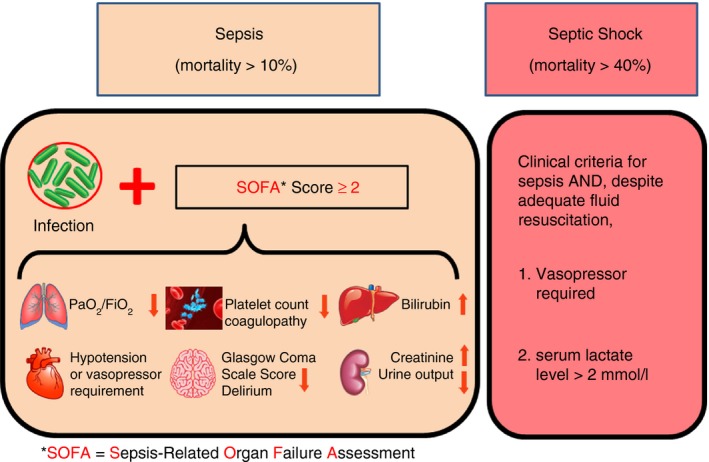Figure 1.

Definitions of sepsis and septic shock. Sepsis is currently defined as life‐threatening organ dysfunction caused by a dysregulated host response to infection. Organ dysfunction can be clinically represented by an increase in the Sepsis‐related Organ Failure Assessment (SOFA) score of 2 points or more, which is related to an in‐hospital mortality in an excess of 10%. Septic shock is defined as a subset of sepsis in which profound circulatory, cellular, and metabolic abnormalities are associated with a greater risk of mortality (> 40%) than with sepsis alone. Despite adequate fluid resuscitation, patients with septic shock require vasopressors to maintain mean arterial pressure (MAP) of 65 mmHg or greater and exhibit evidence of anaerobic metabolism as indicated by serum lactate concentration of > 2 mmol/l.
